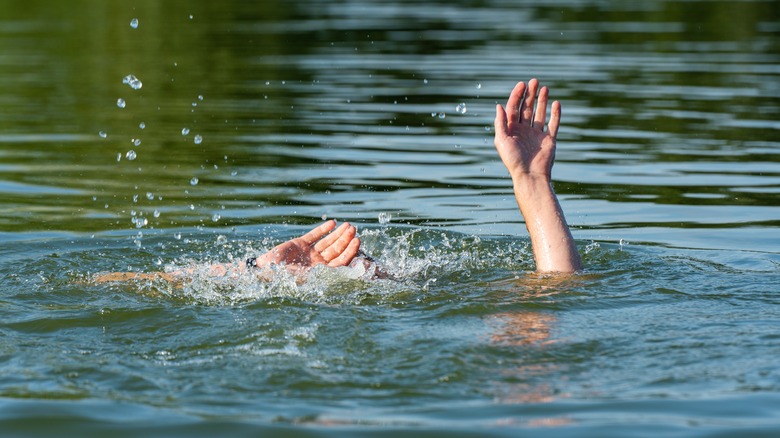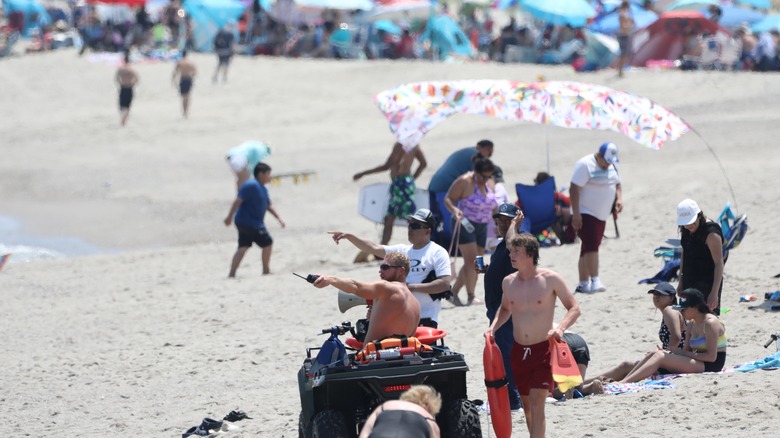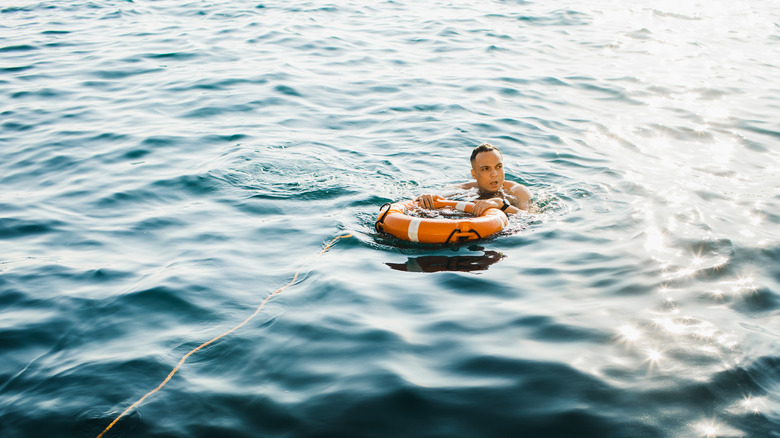What To Do If You See Someone Drowning
Much time and energy is spent on educating people on how to prevent drowning when recreating on, in, or around water. There is a good reason for this — drowning is one of the most common ways people die when fishing, swimming, snorkeling, boating, surfing, or participating in other water-related activities. However, knowing what to do to keep yourself from drowning is one thing. Knowing what to do if you see someone else drowning is quite another.
Unfortunately, there is no one answer that can cover every possible drowning situation, as each scenario will unfold differently based on a variety of factors, including the location — pool, lake, river, beach — as well as the age of the victim, who else is around, and your own abilities. However, there are a few general guidelines that always apply and can help your decision-making when attempting to render aid. Given the frequency in which people drown, which, according to The American Red Cross, is 4,000 people annually in the U.S., it makes good sense to know what to do if you see someone drowning before recreating in or near a body of water.
Call for help if you see a distressed swimmer
In order to help someone who is drowning, you must first be able to recognize the signs of a distressed swimmer. In contrast to popular images seen on television and in movies of a drowning person screaming for help or raising a hand above the surface, the reality of a distressed swimmer is quite different. For starters, because they are focused on breathing and trying to keep water out of their mouth, drowning people are rarely able to call for help. They also may have difficulty raising their arms above their head as natural instincts kick in and cause them to push their arms downward.
So, rather than looking for glamorized Hollywood signals, instead focus on any sign that shows someone in the water may be in trouble. These signs include bobbing below the water, thrashing or struggling on the surface, looking like they are climbing a ladder in the water, head sinking low in the water or tilted back with the mouth facing up, hyperventilating, gasping for air, or keeping their eyes closed. If you witness these or any other signs that make you think someone in the water is in trouble, call for help. If you are on a guarded beach, signal a lifeguard. If you are on an unguarded beach, call 9-1-1. Never assume someone has already called for help, and never take your eyes off the distressed swimmer, as they can disappear in a second.
How you can rescue a drowning person
While waiting for help to arrive, you should attempt to help the distressed swimmer. But do not attempt to go in the water unless you are trained to do so, or it is an absolute last resort, as entering the water to save a drowning person puts you at risk as well. An often-used phrase to help rescuers remember how to render aid to drowning victims is "Reach, Throw, Row, Don't Go."
Following that progression, you should first attempt to reach the person while still standing on a stable platform — shore, dock, pier, or boat, for instance. If you are unable to reach them with your arm, try extending your reach with a stick, oar, pool net, or other long, sturdy object. If they are still beyond reach, attempt throwing a floating object at them. Ideally, this object would be tethered to a rope so the person can be pulled to safety.
Boats should be equipped with life-saving equipment such as a throwable device, but any floating object can be used. Row actually just means going by boat or board. Maneuver your boat, PWC, surfboard, or other watercraft to within reach of the victim and pull them aboard. Finally, if a water rescue is necessary and emergency personnel is not available, wade or swim to the victim, but approach them from behind and carry a floating device. Once the victim is out of the water, assess their condition and perform CPR if necessary.


